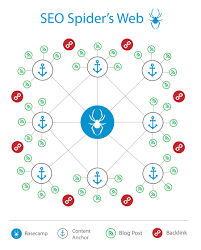The Role of SEO Spider in Website Analysis
SEO Spider is a powerful tool used by digital marketers and SEO professionals to analyse and optimise websites for search engines. This tool acts as a virtual spider that crawls through web pages, collecting valuable data and insights that can help improve a website’s search engine visibility.
One of the key functions of an SEO Spider is to identify technical issues on a website that may be hindering its performance in search engine results. By crawling through the site’s structure, the spider can uncover broken links, duplicate content, missing meta tags, and other factors that could negatively impact the site’s ranking.
Additionally, an SEO Spider can provide valuable information about a website’s internal linking structure. By analysing how pages are connected within the site, marketers can ensure that link equity is distributed effectively and that important pages are receiving the necessary attention from search engines.
Moreover, SEO Spiders are essential for conducting thorough keyword research. By analysing the content of each page and identifying relevant keywords and phrases, marketers can better understand how their site aligns with user search intent and make informed decisions about optimising their content.
In conclusion, an SEO Spider is a crucial tool for website analysis and optimisation. By providing detailed insights into technical issues, internal linking structures, and keyword opportunities, this tool empowers marketers to enhance their websites’ performance in search engine results and ultimately drive more organic traffic to their sites.
Understanding SEO Spiders: Features, Benefits, and Recommended Tools
- What is an SEO Spider and how does it work?
- What are the key features of an SEO Spider tool?
- How can an SEO Spider help in identifying technical issues on a website?
- What insights can be gained from using an SEO Spider for website analysis?
- Are there any recommended SEO Spider tools available in the market?
What is an SEO Spider and how does it work?
An SEO Spider is a powerful tool used in the field of search engine optimisation to analyse and audit websites for various technical and content-related issues. Essentially, an SEO Spider functions like a virtual crawler that navigates through web pages, indexing and collecting data to provide valuable insights for website optimisation. This tool works by scanning a website’s structure, identifying broken links, duplicate content, missing meta tags, and other factors that may impact its search engine ranking. By analysing internal linking structures and keyword usage across pages, an SEO Spider helps marketers understand how well their website aligns with search engine algorithms and user intent, enabling them to make informed decisions to improve their site’s visibility and performance in search results.
What are the key features of an SEO Spider tool?
When exploring the key features of an SEO Spider tool, it becomes evident that its ability to crawl websites comprehensively stands out as a fundamental function. This tool efficiently scans web pages to identify technical issues such as broken links, duplicate content, and missing meta tags, aiding in the enhancement of a website’s search engine performance. Additionally, an SEO Spider tool offers insights into a site’s internal linking structure, ensuring optimal distribution of link equity and highlighting important pages for search engines. Furthermore, this tool plays a crucial role in conducting keyword research by analysing content and identifying relevant keywords to align with user search intent. Overall, the key features of an SEO Spider tool encompass thorough website analysis, technical issue identification, internal linking optimisation, and keyword research facilitation.
How can an SEO Spider help in identifying technical issues on a website?
An SEO Spider plays a vital role in identifying technical issues on a website by acting as a virtual crawler that systematically navigates through the site’s structure. By meticulously analysing each web page, the SEO Spider can detect common technical issues such as broken links, duplicate content, missing meta tags, and other factors that may hinder the website’s performance in search engine rankings. This comprehensive analysis provided by the SEO Spider enables digital marketers and SEO professionals to pinpoint and rectify these technical issues promptly, ensuring that the website is optimised for improved search engine visibility and user experience.
What insights can be gained from using an SEO Spider for website analysis?
When utilising an SEO Spider for website analysis, a multitude of valuable insights can be obtained to enhance a site’s search engine optimisation efforts. This tool enables users to uncover technical issues such as broken links, duplicate content, and missing meta tags that may be impeding the site’s performance in search engine rankings. Additionally, an SEO Spider provides a comprehensive view of a website’s internal linking structure, allowing marketers to optimise link equity distribution and ensure important pages receive the necessary visibility. Furthermore, through detailed keyword analysis, this tool helps identify relevant keywords and phrases that align with user search intent, assisting in crafting targeted and effective content strategies for improved search engine visibility and organic traffic growth.
Are there any recommended SEO Spider tools available in the market?
When it comes to SEO Spider tools, there are several recommended options available in the market that can help digital marketers and SEO professionals analyse and optimise websites effectively. Some popular choices include Screaming Frog SEO Spider, Sitebulb, and DeepCrawl. These tools offer a range of features such as crawling capabilities, technical site audits, detailed reports on issues like broken links and duplicate content, and insights into on-page SEO elements. Each tool has its strengths and unique functionalities, so it’s essential to explore different options to find the best fit for specific website analysis needs.

